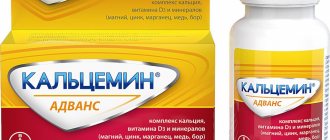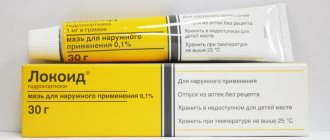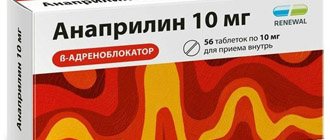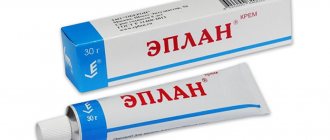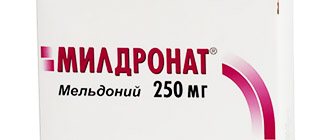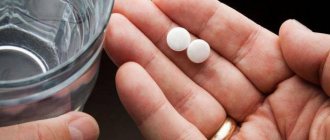Medicine is constantly improving, changes are taking place in the forms and methods of treatment for various diseases. Some medications are modified, while others are completely withdrawn from general use due to their ineffectiveness or the presence of a large number of adverse reactions, which can become a source of danger to humans. Pyramidon is one of the discontinued drugs. We will look at what this is in this article. Not everyone knows that this remedy actually existed. Many people remember about him only from the books of M. Bulgakov.
Description of the medication
Many consumers often asked doctors about the drug Pyramidon.
They didn’t know what it was, mistakenly thinking that the medicine was a narcotic. Is it really? The active component of the drug was aminophenazone. Probably someone will remember that “Pyramidon” (medicine) was often replaced with a Russian analogue – “Amidopyrine”. The drug can be compared in action to Phenazone. The medicine was produced in tablets. They were sold without medical prescription. Many doctors also prescribed it to patients, including children. If you were born in the 50s and 60s, you probably remember how your parents offered you this cold medicine. Only after some time did experts realize the danger of “magic” pills.
Contraindications to the use of Amidopyrine
Amidopyrine according to the instructions is contraindicated for blood diseases, gastrointestinal ulcers, during lactation, pregnancy, acute gastric and intestinal bleeding, hypersensitivity to the drug. The drug is not prescribed to children under 14 years of age.
Amidopyrine should be used with caution in patients with bronchial asthma or hypersensitivity to other non-steroidal anti-inflammatory drugs.
Amidopyrine solution cannot be combined with salts of organic nitrogen-containing bases and alkaloids, with oxidizing agents, and its powder cannot be combined with menthol, thymol, aspirin, resorcinol, cinchonfen, phenyl salicylate.
November 17, 2013
Interaction with other drugs
Due to simultaneous use with Amidopyrine, the therapeutic effect is enhanced. However, the use of the drug as part of combination therapy increases the severity of negative side effects. This is confirmed by the instructions for use for the Pyramidon product.
Decontamination and complete incompatibility are noted in relation to Aspirin and other drugs that have an acidic reaction.
Taking “Analgin”, “Caffeine”, “Phenacetin” and “Phenobarbital” at the same time can enhance the manifestation of the analgesic effect of “Pyramidon”. Its anti-inflammatory effect is more pronounced than that of Antipirin. In relation to smooth muscle muscles, an antispasmodic effect is manifested, and therefore the drug can be prescribed in the presence of colic, stomach and intestinal spasms.
There is incompatibility of powder forms with menthol, acetylsalicylic acid, resorcinol, Thymol, Phenyl salicylate, Tsinghonfen, since eutectic mixtures are formed.
Amidopyrine preparations
Pirafen - tablets containing amidopyrine and phenacetin, 0.25 g each.
Pyraminal - tablets containing amidopyrine - 0.25 g, caffeine - 0.03 g, phenobarbital - 0.02 g.
Pyramein - tablets containing amidopyrine - 0.3 g, caffeine - 0.03 g.
Novomigrofen is a combination drug containing amidopyrine, phenacetin, caffeine, and citric acid. Used as an analgesic for headaches, neuralgia, and as an antipyretic for colds.
Piranal - tablets containing 0.25 g of amidopyrine and analgin.
Pircofen - tablets containing 0.25 g of amidopyrine and phenacetin and 0.05 g of caffeine.
Amizol - tablets containing 0.3 g amidopyrine and 0.02 g dibazole.
Result of application
The medicine was effective and popular, but only for a certain time. During the years of its active use, the development of medicine did not allow a banal blood test to be performed on every patient. Therefore, even long-term use of the tablets was not prohibited: doctors were unaware of their actual effect.
It later turned out that the medicine was a time bomb. When used, the medicine improved well-being, but at the same time reduced the number of leukocytes in the blood. Regular use of Pyramidon contributed to the development of the immunodeficiency effect. It turns out that one was treated, and the other was crippled. Patients more often suffered from viral and bacterial diseases. And when treated with sulfonamides, severe forms of skin allergies appeared. But no one could have thought that this was the result of long-term use of Pyramidon.
Those children who, at the insistence of their parents, often took this drug, had various bone marrow diseases. This medication was actively affecting him. In some situations, the medicine even caused death. But, we repeat, no one could even think...
History of the creation and prohibition of Amidopyrine
The drug was part of a group of non-narcotic analgesics with analgesic, anti-inflammatory and antirheumatic properties.
It was also produced under the trade names Dipirin, Novoamidon, Pyramidon, etc. Amidopyrine (more precisely, the active substance aminophenazone) was discovered at the end of the 19th century by the German scientist Friedrich Stoltz as a result of the synthesis of another painkiller - antipyrine. By changing just one molecule, the chemist created a new substance that was superior in properties to its predecessor. Subsequently, the substance received another name - pyramidon. The new medicine quickly spread throughout the world, as it was considered very effective in suppressing pain and inflammatory pathologies.
But since the late 70s. In the last century, amidopyrine and its derivatives were withdrawn from sale because it was discovered that the substance promotes the formation in the human body of the carcinogenic compound nitrosamine, which provokes malignant tumors.
Plus, studies have revealed that the medicine affects the bone marrow in children. It was recorded that after treatment with the drug, the level of leukocytes in the blood of patients sharply decreased, and in some patients it was completely absent. As a result of damage to bone hematopoiesis, the incidence of agranulocytosis has greatly increased - a dangerous blood pathology that is practically untreatable and causes fever, necrosis of mucous tissues, contributing to the development of sepsis and bleeding.
Moreover, it turned out that Ampdopirin causes disease regardless of the dosage. That is, the likelihood of a fatal disease occurring is in no way related to the amount of dosage consumed. Amidopyrine provokes a dangerous disease in any dose - minimal or maximum.
Such terrible consequences of treatment with Amidopyrine became the basis for its ban. In Russia, the drug was officially excluded from the register of medicinal products in 1997.
Amidopyrine derivatives that were part of other medications were also recognized as dangerous. Some drugs were withdrawn from sale, while others had their formulations redesigned. So, for example, in Pentalgin a combination of analgin and naproxen (or analgin with paracetamol) was included instead, and in Teofedrine-N - paracetamol.
Properties and price of the drug
"Amidopyrine" is written and sounded in Latin as Amidopyrinum.
The main components of the drug are caffeine benzoate (0.1 g) and amidopyrine (0.25 g). It can be presented in the form of tablets and a white solution.
Amidopyrine is used to combat severe pain, to reduce high fever, and also as an anti-inflammatory or antirheumatic agent. Moreover, its effectiveness is much higher in comparison with other drugs with a similar type of action.
The drug shows excellent results in the fight against joint pain and migraines, so in such cases it is worth choosing Amidopyrine. The price of the drug ranges from 45-70 rubles per package (20 tablets) and differs depending on the pharmacy or region of residence.
Features of the drug
Composition of Amidopyrine
Amidopyrinum is the Latin name of a drug containing 100 mg of sodium benzoate (caffeine) and 250 mg of dimethylaminopyrazolone, which is the active substance. The chemical formula of the drug Amidopyrine, taking into account two chemical compounds - 2,3-dimethyl-1 -phenyl-4-dimethylaminopyrazolone -5 pyramidone.
Next, the forms and price of Amidopyrine in Russia are considered.
Dosage forms and prices
- Tableted. Produced since Soviet times in a package of 6 tablets. During Soviet times it was known as “Pyramidon”. Amidopyrine tablets are white or whitish in color with a gray tint.
- Powder. Crystalline white powder with a mild bitter taste. The powder dissolves poorly in water and quite well in ethyl alcohol.
- Injection. Ampoules with Amidopyrine solution are produced in different capacities: 10, 5 and 1 ml. The ampoules contain a solution of amidopyrine at 2% or 4% concentration. Ampoules are packed in 10 or 100 pieces in cardboard packs.
Amidopyrine, like Pyramidon, was discontinued in Russian production at the end of the 20th century. On the Russian pharmaceutical market, Amidopyrine is produced in Ukraine. The pricing policy of a marketed drug is determined freely.
Release form
What it is? “Pyramidon” appears as white crystals or crystalline powder of the same shade, odorless, with a slightly bitter aftertaste, which slowly dissolves in water (in a ratio of one to twenty), but is highly soluble in ethanol (one to two).
One package contains six tablets. Ampules of one, five and ten milliliters contain a solution of two and four percent concentration of the active substance. Each package contains ten or one hundred ampoules.
Properties of Amidopyrine
The drug contains 0.25 g amidopyrine and 0.1 g caffeine benzoate. It looks like a white powder with a crystalline structure and tastes a little bitter. It dissolves very poorly in water, but in alcohol solutions this indicator noticeably improves. Amidopyrine has antipyretic, anti-inflammatory, analgesic, and antirheumatic properties. Numerous reviews from specialists and patients indicate that the effect of Amidopyrine as an antipyretic agent is many times greater than the effect of a similar drug, Antipyrine.
The drug is available in the form of tablets and solution. Amidopyrine analogues are widely known and available. Also, its basic active substance is included in other drugs. There are many analogues of Amidopyrine: Pyrazone, Amidofen, Aminopyrazoline, Amidozon, Amidofebrin, Aminopyrine, Alamidon, Amidopyrazoline, Aneuxol, Pyrazorin, Stellamidon, Anafebrine, Dipirin, Dimethyl-amino-phenazone, Aminophenazone, Novamidon, Amidazofen, Pyramidon, Dimethylamino-antipyrine, Amidozone, Pyramine, Dinapirin. But here are a number of drugs that contain amidopyrine: Pyraminal, Novomigrofen, Piranal, Pirkofen, Amizol, Pyramein.
The action of Amidopyrine is that it blocks the processes of biosynthesis of active prostaglandins. For pain in the stomach or intestines, it has an antispasmodic effect on smooth muscles. The drug is most effective in the fight against acute headaches and joint pain.
How to take Amidopyrine
Treatment of joint diseases is always carried out comprehensively. It works in two directions - it eliminates the cause of the pathology and reduces pain. The treatment regimen is developed by the doctor, and painkillers are prescribed to alleviate the patient’s condition and reduce pain.
Let's look at the instructions for use of Amidopyrine (Pyramidon), an effective drug from the group of potent painkillers.
Compound
“Amidopyrine” is a drug that has been actively used as part of complex treatment of lesions of the musculoskeletal system (MSD) to eliminate pain.
Reference. “Amidopyrine” and “Pyramidon” are often used as synonyms, since these drugs are complete structural analogues, similar in composition, medicinal properties and method of application.
The composition of these medicines is represented by the active ingredient - aminophenazone, as well as caffeine-sodium benzoate.
Reference. Aminophenazone is a strong anesthetic substance obtained as a result of experiments with antipyrine (painkiller).
The chemical formula is as follows:
- C13H17N3O (gross formula);
- 4-dimethylamino-1,5-dimethyl-2-phenylpyrazol-3-one (name of the chemical compound according to the nomenclature of the International Union of Pure and Applied Chemistry).
Pharmacodynamics and pharmacokinetics
The action of the drug is based on the following mechanisms:
- dilation of blood vessels (anti-inflammatory effect);
- normalization of blood microcirculation;
- influence on the hypothalamus and its nerve centers (painkiller effect);
- inhibition of hypothalamic nucleus processes (elimination of febrile symptoms, decrease in temperature).
Pharmacokinetics: after absorption, the drug is metabolized in the liver. Metabolites are excreted by the sweat glands and urinary system. In this case, the urine turns bright red.
Overdose
If the recommended norm is exceeded, the drug causes an overdose, accompanied by the following pathological conditions:
- Necrosis of the kidney parenchyma - destruction of kidney tissue with lower back pain, renal colic, nausea, vomiting, and the appearance of blood in the urine.
- Tonic-clonic seizures are a phenomenon that occurs in two periods. The tonic convulsions phase lasts 20 seconds and is accompanied by spasms of the entire skeletal muscles and rolling up of the eyeballs. Then the period of clonic convulsions lasts 40 seconds, proceeds with phases of spasms and relaxation of the muscle tissue of the body.
- Heart dysfunction.
- Pulmonary edema is a pathology in which the fluid content in the lung tissues increases, which leads to a sharp disruption of gas exchange in the lungs.
- Reducing blood pressure to critical levels.
If such reactions develop, you should immediately go to the hospital where symptomatic therapy will be carried out.
Interaction with other drugs and alcohol
"Amidopyrine" is characterized by the following interactions with other drugs and medicinal substances:
- Analgesics and antispasmodics. The effectiveness of these medications increases, but at the same time increases the likelihood of developing negative reactions.
- Zinkhofen, resorcinol, phenyl salicylate, thymol, menthol are not combined with the powder form of the product.
- Medicines containing acetylsalicylic acid (Aspikor, Aspirin, Cardiomagnyl, etc.) are completely incompatible with Amidopyrine.
- Alkaloids, salts of organic nitrogen-containing bases, oxidizing agents are not prescribed with the medication in the form of a solution.
During the treatment period, you should avoid any alcoholic beverages, as the likelihood of negative effects on the liver, heart, and kidneys increases.
Price and where to buy
Since Amidopyrine is not in the register of medications, it is not sold in Russia.
But on the territory of Ukraine, where the product is produced today, its average price is 140 UAH, which is approximately 334 rubles at the exchange rate of the Central Bank of Russia. Available in pharmacies with a prescription.
Conclusion
"Amidopyrine" is an effective drug that was actively prescribed for the treatment of lesions of the musculoskeletal system during the Soviet Union. However, at the end of the 20th century, the drug was excluded from the list of registered drugs and discontinued. This is due to the fact that during the tests the toxicity of the drug and its ability to negatively and irreversibly affect vital organs were revealed.
How to replace Amidopyrine
Since the drug itself and other drugs with its derivatives are completely prohibited, there are no direct analogues. However, this does not mean that there was no replacement for Amidopyrine. Today, there are many other NSAID medications that have a similar therapeutic effect, but do not have a dangerous toxic effect on the body.
Based on their chemical structure, drugs are divided into different groups:
Based on acids:
- Salicylates
- Pyrazolidines
- Derivatives of indoleacetic and phenylacetic acid
- Oxycams
- Propionic acid derivatives
Another group includes drugs created on the basis of active substances of non-acidic origin: alkanones and sulfonamides.
Each medicine of one group or another differs in its active substance and effect on the body. Therefore, the selection of the necessary medicine should be made by the doctor, based on the characteristics of the diagnosis and the patient’s health.
Salicylates
ASA-based drugs have anti-inflammatory, analgesic and antipyretic effects. The mechanism of action is achieved through suppression of the process of synthesizing mediators of inflammation, pain, and fever. At the same time, salicylates prevent platelet aggregation, thereby eliminating the threat of blood clots.
The main indications for therapy are:
- Rheumatism and related diseases
- Fever due to infectious and inflammatory pathologies
- Pain of various origins and localization
- Prevention of thrombosis, embolism
- Prevention of myocardial infarction and ischemic blood flow disorders.
Salicylates have an aggressive effect on the mucous tissues of the gastrointestinal tract, so in most cases the drugs are produced under a protective coating or in capsules.
Drugs with ASA: Aspicard, Aspicor, Aspirin Cardio, Acecardol, CardiASK, Sanovasc, Taspir, Thrombo ACC, Thrombopol, Upsarin UPSA.
Pyrazolidines
The effect of drugs is determined by the properties of pyrazolone derivatives. Medicines eliminate pain, high fever, and inflammation by blocking COX activity. The main active substances of this group: phenylbutazone, analgin (metamizole sodium).
Medicines with phenylbutazone
The drugs are prescribed orally or by injection for:
- Rheumatism
- Infectious nonspecific polyarthritis
- Ankylosing spondylitis
- Arthritis (gout, psoriatic)
- Erythema nodosum
- Small chorea.
Medicines for external use are recommended for:
- Dermatitis due to mechanical damage to the skin
- Minor burns
- Insect bites
- Inflammatory infiltrates
- Muscle strains.
Possible side effects:
- Gastrointestinal disorders: dyspepsia, damage to the mucous membranes due to NSAIDs, abdominal pain, nausea, vomiting, bowel movement disorders, ulceration (with a long course), bleeding
- Liver dysfunction
- Increased blood pressure, heart disorders, tachycardia
- Hearing impairment, tinnitus
- Hematopoietic disorders
- Manifestation of allergies: rash, urticaria, bronchospasm, swelling, Quincke's edema.
Contraindications:
- Individual sensitivity
- PUD, duodenum
- Dysfunction of the liver, kidneys
- Pathologies of hematopoiesis
- CHF
- Pregnancy
- For external drugs: ulcers, eczema.
Indoleacetic acid derivatives
Drugs in this group are developed based on the properties of the active substances indomethacin and etodolac. The mechanism of action is achieved by suppressing the activity of COX and subsequent synthesis of prostaglandins.
Indications for use are:
- Joint syndrome
- Spinal pain
- Pain in muscles, joints
- Neuralgia
- Inflammation of soft tissues and joints after injuries
- Rheumatism
- Diffuse connective tissue pathologies
- Painful periods.
Drugs with indomethacin: Indomethacin, Methindol Retard. With etodolac: Nobedolac.
Phenylacetic acid derivatives
Medicines may contain diclofenac or aceclofenac. They have a strong anti-inflammatory, analgesic and moderate antipyretic effect. Suppress the formation of proteoglycan in cartilage tissues, eliminate rheumatic joint pain, and improve mobility.
Preparations containing diclofenac are mainly used externally, so gels, ointments, and rectal suppositories are more widely available. But there are also tablets for oral use.
Drugs containing aceclofenac act in a similar way. Recommended for use in diseases of the musculoskeletal system.
LS: Alenthal, Asinak, Aertal.
Oxycams
This group includes drugs containing oxicam derivatives: piroxicam, meloxicam, lonoxicam, etc.
Substances suppress the activity of COX, which controls the synthesis of prostaglandins in areas of inflammation. They have strong analgesic, anti-inflammatory and antipyretic effects:
- With meloxicam: Arotrozan, Genitron, Movalis, Flexibon, Oxycamox
- With piroxicam: Finalgel, Feldoral, Hotemin, Piroxyfer.
- With tenoxicam: Artoxan, Texared.
- With lornoxicam: Xefocam, Lornoxicam, Zornica.
Preparations with propionic acid derivatives
The drugs are produced with the active substances ibuprofen, ketoprofen, naproxen, flurbiprofen, etc. Like other NSAIDs, they inhibit the functioning of cyclooxygenases and the synthesis of prostaglandins.
The drugs are prescribed for pathologies of the musculoskeletal system, arthralgia, muscle pain, rheumatism, ankylosing spondylitis, osteoarthritis, and arthritis.
Available in oral and parenteral forms, as well as ointments and gels for external use.
Release form and composition
Amidopyrine is produced in tablets of 250 mg in a package of 6 pieces.
Each tablet contains: amidopyrine - 250 mg, caffeine-sodium benzoate - 100 mg.
Amidopyridine analogues are:
- Amidozone;
- Amidazophene;
- Aminopyrine;
- Amidofen;
- Pyradon;
- Pyramin;
- Aminopyrazoline;
- Dinapirin;
- Pyrazone.
According to the instructions for Amidopyrine, it is prescribed for diseases such as:
- neuralgia;
- acute articular rheumatism;
- arthritis;
- chorea (a disease characterized by involuntary movements of the limbs);
- headache;
- feverish conditions;
- myositis;
- joint inflammation;
- muscle inflammation;
- pain syndrome spreading along the nerves.
Amidopyrine is also indicated for acute rheumatic arthritis in children.
The drug should be taken strictly in consultation with your doctor.
When is Pyramidon used?
Aminophenazone is currently used as a non-invasive diagnostic tool for cytochrome P-450 metabolic activity in the liver, using a breath test with radioactively labeled drug molecules.
In the past, the drug "Pyramidon" was used for diseases such as:
- myositis, that is, inflammatory processes in muscle tissue;
- headache;
- acute rheumatism of joints;
- arthritis, that is, inflammatory processes occurring in the joints;
- infectious diseases accompanied by high fever;
- neuralgia (pain syndrome expressed along the nerve);
- febrile syndrome;
- migraine.
Side effects
In some cases, treatment with this drug may be accompanied by side effects, such as:
- nausea, vomiting;
- decreased appetite;
- pain in the epigastrium;
- diarrhea or constipation;
- headache and dizziness;
- state of fatigue and general malaise;
- decreased visual acuity;
- impaired concentration;
- severe drowsiness;
- depressive states.
In rare cases, when using this drug, some disturbances in the ratio of blood components (cellular components and plasma) are observed. It is also possible to develop allergic reactions (for example, rash, urticaria, kidney dysfunction). Cases of anaphylactic reactions have been described (very rare).
Amidopyrine is excreted by the body mainly in the urine, and its breakdown products can sometimes give it a red or dark yellow color.
During long-term therapy with the drug, it is necessary to take a blood test from time to time, since in some cases there is inhibition of hematopoiesis (agranulocytosis and granulocytopenia).
If these adverse reactions occur, use of Amidopyrine should be stopped and contact your doctor for correction in the prescribed course of therapy.
The description posted on this page is a simplified version of the official version of the annotation for the drug. The information is provided for informational purposes only and does not constitute a guide for self-medication. Before using the medicine, you must consult a specialist and read the instructions approved by the manufacturer.
Similar drugs:
- Andipal Tablets
- Nimesil Granules for the preparation of suspension for oral administration
- Mataren plus Cream for external use
- Dollar () Oral tablets
- Nurofen Express Capsule
- Celebrex Capsule
- Nurofen Express Oral tablets
- Nalgesin Oral tablets
- Airtal Powder for the preparation of suspension for oral administration
- Naklofen Duo Capsule
** The Drug Directory is intended for informational purposes only. For more complete information, please refer to the manufacturer's instructions. Do not self-medicate; Before starting to use the drug Amidopyrine, you should consult a doctor. EUROLAB is not responsible for the consequences caused by the use of information posted on the portal. Any information on the site does not replace medical advice and cannot serve as a guarantee of the positive effect of the drug.
Are you interested in the drug Amidopyrine? Do you want to know more detailed information or do you need a doctor's examination? Or do you need an inspection? You can make an appointment with a doctor - the Euro lab is always at your service! The best doctors will examine you, advise you, provide the necessary assistance and make a diagnosis. You can also call a doctor at home . Euro lab clinic is open for you around the clock.
** Attention! The information presented in this medication guide is intended for medical professionals and should not be used as a basis for self-medication. The description of the drug Amidopyrine is provided for informational purposes only and is not intended for prescribing treatment without the participation of a doctor. Patients need to consult a specialist!
If you are interested in any other drugs and medications, their descriptions and instructions for use, information about the composition and form of release, indications for use and side effects, methods of use, prices and reviews of drugs, or you have any other questions and suggestions - write to us, we will definitely try to help you.
Terms and conditions of storage
Amidopyrine should be stored in a cool, dry place, protected from sunlight.
The shelf life is 2 years.
Information about the drug is generalized, provided for informational purposes and does not replace official instructions. Self-medication is dangerous to health!
Most women are able to derive more pleasure from contemplating their beautiful body in the mirror than from sex. So, women, strive to be slim.
Even if a person's heart does not beat, he can still live for a long period of time, as the Norwegian fisherman Jan Revsdal demonstrated to us. His “engine” stopped for 4 hours after a fisherman got lost and fell asleep in the snow.
A person taking antidepressants will, in most cases, become depressed again. If a person has coped with depression on his own, he has every chance to forget about this condition forever.
It was previously believed that yawning enriches the body with oxygen. However, this opinion has been refuted. Scientists have proven that yawning cools the brain and improves its performance.
Each person has not only unique fingerprints, but also tongue prints.
In 5% of patients, the antidepressant Clomipramine causes orgasm.
Over the course of a lifetime, the average person produces no less than two large pools of saliva.
You are more likely to break your neck if you fall off a donkey than if you fall off a horse. Just don't try to refute this statement.
Many drugs were initially marketed as medicines. Heroin, for example, was originally brought to market as a cure for children's coughs. And cocaine was recommended by doctors as an anesthesia and as a means of increasing endurance.
Tooth decay is the most common infectious disease in the world, which even the flu cannot compete with.
More than $500 million a year is spent on allergy medications in the United States alone. Do you still believe that a way to finally defeat allergies will be found?
The first vibrator was invented in the 19th century. It was powered by a steam engine and was intended to treat female hysteria.
Dentists appeared relatively recently. Back in the 19th century, pulling out diseased teeth was the responsibility of an ordinary hairdresser.
An educated person is less susceptible to brain diseases. Intellectual activity promotes the formation of additional tissue that compensates for the disease.
Millions of bacteria are born, live and die in our intestines. They can only be seen under high magnification, but if they were put together, they would fit in a regular coffee cup.
Doctors by definition have several opinions regarding VSD. Some are irrefutably convinced that this disease exists, while others claim that it does not exist, but...
Amidopyrine
05.08.2014
Amidopyrine is a non-steroidal non-narcotic drug with a broad anti-inflammatory effect. It is used to relieve pain syndromes of various types. There are a huge number of Amidopyrine analogues.
Properties of Amidopyrine
The drug contains 0.25 g amidopyrine and 0.1 g caffeine benzoate. It looks like a white powder with a crystalline structure and tastes a little bitter. It dissolves very poorly in water, but in alcohol solutions this indicator noticeably improves.
Amidopyrine has antipyretic, anti-inflammatory, analgesic, and antirheumatic properties.
Numerous reviews from specialists and patients indicate that the effect of Amidopyrine as an antipyretic agent is many times greater than the effect of a similar drug, Antipyrine.
There are many analogues of Amidopyrine: Pyrazone, Amidofen, Aminopyrazoline, Amidozon, Amidofebrin, Aminopyrine, Alamidon, Amidopyrazoline, Aneuxol, Pyrazorin, Stellamidon, Anafebrine, Dipirin, Dimethyl-amino-phenazone, Aminophenazone, Novamidon, Amidazofen, Pyramidon, Dimethylamino-antipyrine, Amidozone, Pyramine, Dinapirin.
But here are a number of drugs that contain amidopyrine: Pyraminal, Novomigrofen, Piranal, Pirkofen, Amizol, Pyramein.
The action of Amidopyrine is that it blocks the processes of biosynthesis of active prostaglandins. For pain in the stomach or intestines, it has an antispasmodic effect on smooth muscles. The drug is most effective in the fight against acute headaches and joint pain.
Indications for use
The instructions for Amidopyrine indicate that the drug effectively relieves fever, symptoms of neuralgia, myositis, acute pain due to articular rheumatism, chorea and arthritis. The drug shows excellent results in the fight against headaches.
This drug is well tolerated and is recommended for acute rheumatic arthritis in children. Amidopyrine helps relieve muscle and nerve pain.
The drug can be taken strictly in consultation with your doctor.
Instructions for Amidopyrine
The drug is prescribed only by a doctor after examining the patient and based on test results. But the instructions for Amidopyrine indicate the following dosage regimen:
- Usually 1 tablet (0.25 g) is prescribed, 3-4 times a day. The maximum effect is achieved after the patient takes the drug 4 times;
- For acute rheumatism, the dosage is increased to 2 g and taken 2-3 times a day. This treatment regimen can be very long; the medicine should be taken until the symptoms of acute rheumatism disappear completely. After symptoms are relieved, you should adhere to maintenance therapy for two to three weeks and take the drug 0.6 g per day;
- For migraine and hypertension, use 1 tablet 2 times a day as a vasodilator;
- Children over 12 years of age are prescribed 0.025-0.15 g once a day. When treating a child, only a doctor can prescribe a dosage depending on the type of disease and the condition of the child’s entire body.
Amidopyrine enhances its effect in combination with drugs such as Analgin, Phenacetin, Phenobarbital and Caffeine. The maximum dosage for an adult is 0.5 g at a time. For acute conditions, 1.5 g is allowed.
Indications for use
The medication is used for symptomatic treatment of various pathological conditions:
- Myositis is a group of diseases characterized by inflammatory damage to skeletal muscles.
- Arthritis is an inflammatory lesion of the joints.
- Neuralgia is a lesion of peripheral nerves, which is accompanied by pain in the area of innervation of the affected nerve fiber.
- Migraines are a neurological pathology that manifests itself as regular, severe attacks of pain in one or both halves of the head.
- Articular rheumatism in the acute period is a systemic inflammatory pathology of connective tissue.
- Fever syndrome is a biological process that occurs as a reaction of the body to an infection and is expressed by an increase in body temperature.
- Infectious diseases, the course of which is accompanied by high body temperature.
- Headache.
Use for colic and spasms in the intestines and stomach is not excluded, since the drug has a pronounced antispasmodic effect.
Contraindications
Contraindications for the use of the medication include:
- Individual intolerance to components.
- Peptic ulcer of the stomach, intestines, duodenum is a pathology of the digestive system, which is accompanied by a defect in the mucous membrane and the tissues located underneath it.
- Children and teenagers up to 14 years of age.
- Gastric bleeding is the entry of blood from damaged vessels into the lumen of the stomach. Accompanied by weakness, dizziness, vomiting “coffee grounds”.
- Liver disorders.
- Seizure activity is the body's predisposition to sudden seizures.
- The period of pregnancy and breastfeeding.
- Bronchial asthma is a chronic inflammatory pathology of the respiratory system. Its main manifestation is bronchospasm (narrowing of the lumens of the bronchi).
- Blood pathologies and the tendency to develop hematopoietic diseases.
Side effects
The medication provokes the development of systemic side effects:
- inhibition of the hematopoietic process;
- swelling;
- rash, itching on the skin;
- sleep disturbance;
- anaphylactic reaction is a rapidly developing manifestation of systemic allergy;
- allergic reactions.
With long-term and regular use, the development of agranulocytosis is possible - a decrease in the number of leukocytes in the blood due to granulocytes and monocytes.
Contraindications
According to the instructions for use of Pyramidon, the following are contraindications:
- lesions of the digestive tract with ulcers (intestines, stomach, duodenum);
- bronchial asthma;
- blood diseases (when there is a predisposition to the occurrence of hematopoietic pathology);
- age restrictions up to fourteen years;
- activity of a convulsive nature;
- stomach bleeding;
- blood clotting defects;
- severe pathology of the liver system;
- individual sensitivity to the composition.
This drug has been found to be very toxic, and therefore is not used in medical practice in Europe and the USA. If taken regularly, it can provoke agranulocytosis and also suppress hematopoiesis.
Contraindications and possible side effects from the use of the drug
"Amidopyrine" slightly inhibits the blood circulation in the body, so it is necessary to monitor the state of the blood during the entire course of therapy. In addition, it can provoke allergic reactions, which will manifest themselves in the form of rashes, redness, itching, hives, etc.
There are some contraindications to the use of the drug:
- presence of blood diseases;
- diseases of the gastrointestinal tract in the form of ulcers;
- the presence of intestinal or stomach bleeding.
In addition, the use of the drug is contraindicated in the presence of hypersensitivity to the components of the drug, as well as during pregnancy and breastfeeding.
The drug is not prescribed to children under 14 years of age.
In addition to the main contraindications for use, there are some additional points. For example, Amidopyrine solution should not be taken together with Aspirin, Thymol, Resorcinol and other medications that contain alkaloids, salts of organic nitrogen-containing bases and oxidizing agents.
Side effects may occur if the maximum dosage of the drug is exceeded
They can manifest themselves in the form of nausea, diarrhea or constipation, weakness throughout the body and loss of strength, severe headaches, fatigue, blurred vision, and loss of the ability to concentrate on anything. In some cases, a state of oppression and depression may occur
So, from all of the above, we can draw short conclusions: “Amidopyrine” is a strong pain reliever, but its use without the knowledge of a doctor is prohibited (since only an experienced doctor will be able to prescribe the necessary dosages). The drug cannot be combined with some medications and in case of overdose can cause side effects.
Amidopyrine – Methods and means of treating diseases
The tablet contains 250 mg of the active substance dimethylaminopyrazolone and 100 mg of sodium caffeine benzoate.
Amidopyrine formula: C13-H17-N3-O.
Release form
The medication is available in tablet form, in the form of a crystalline white, slightly bitter powder without a particular odor, in the form of a solution. The crystals dissolve easily in an alcohol solution and slowly in an aqueous solution.
Tablets are available in packs of 6 pieces. Ampoules of 1.0, 5.0 and 10.0 ml contain a solution of 2% or 4% of the active substance. Each cardboard package contains 10, 100 ampoules.
pharmachologic effect
Analgesic, antipyretic, anti-inflammatory agent. According to the mechanism of action, the active component is similar to Antipyrine, but has more pronounced activity. Amidopyrine is considered the strongest analgesic in its pharmacological group. The therapeutic effect of the drug develops more slowly in comparison with Antipyrine, but lasts longer.
When taking Analgin, Phenacetin, Caffeine and Phenobarbital simultaneously, the severity of the analgesic effect of the drug increases.
The anti-inflammatory effect of Pyramidon is more pronounced than that of Antipyrin.
In relation to smooth muscle muscles, an antispasmodic effect is manifested, which makes it possible to prescribe the drug for colic and spasms of the intestines and stomach.
https://youtube.com/watch?v=q8dusqjN_7E
In the treatment of acute rheumatic arthritis in pediatric practice, preference is given to Amidopyrine due to better tolerability of the drug by the child's body compared to other sodium salicylates.
Instructions for use of Amidopyrine (Method and dosage)
The tablets are intended for oral administration. The drug can be taken up to 4 times a day in a single dosage of 0.3 g. The daily dosage can be increased to 3 g (to relieve acute attacks of rheumatism).
A single dose is calculated according to the following scheme: 0.2 grams for each year of life. After 4 doses according to the described scheme, the maximum dosage of Amidopyrine is achieved.
Instructions for use of Amidopyrine for children
For an adult patient, the maximum dose taken at a time is 0.5 g per day.
Interaction
Amidopyrine enhances the therapeutic effect of most analgesics and antispasmodics. The use of the drug as part of combination therapy leads to an increase in the severity of negative side reactions.
Inactivation and complete incompatibility are recorded for Aspirin and other drugs that have an acidic environment.
special instructions
The drug can inhibit hematopoiesis, which can lead to the development of leukopenia (decreased number of white blood cells) with agranulocytosis.
Powder forms are incompatible with resorcinol, menthol, acetylsalicylic acid, Tsinchonfen, Thymol, Phenyl salicylate (eutectic mixtures are formed). The medicinal product is excluded from the register of medicinal products of the Russian Federation.
Amidopyrine analogues
Level 4 ATX code matches:
- Amidozone;
- Pyramidon;
- Pyrazone;
- Amidofen;
- Alamidon.
In pediatric practice, Amidopyrine can be used only in exceptional cases to relieve an acute attack of rheumatism.
Amidopyrine price, where to buy
The price of Amidopyrine in Ukraine is 139.95 UAH.
The medicine is not commercially available in the Russian Federation.
PLEASE NOTE! Information about medications on the site is for reference and general information, collected from publicly available sources and cannot serve as a basis for making a decision on the use of medications in the course of treatment. Before using the drug Amidopyrine, be sure to consult with your doctor.
Pharmacological effect of the drug
"Pyramidon" is a drug, an antipyretic and analgesic, belonging to the group of pyrazolones, characterized by anti-inflammatory, analgesic and antipyretic effects, but when using this drug there is a risk of agranulocytosis.
In terms of the effects of the main component, it resembles Antipyrin (it is considered the most powerful analgesic in its pharmacological group), but is distinguished by higher activity. Compared to Antipirin, the therapeutic effect of the drug occurs more slowly, but lasts longer.
Due to the fact that Pyramidon has dangerous side effects, it has been withdrawn from circulation in many countries, including Russia.
